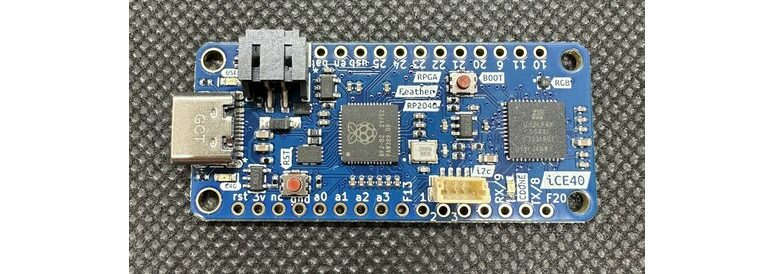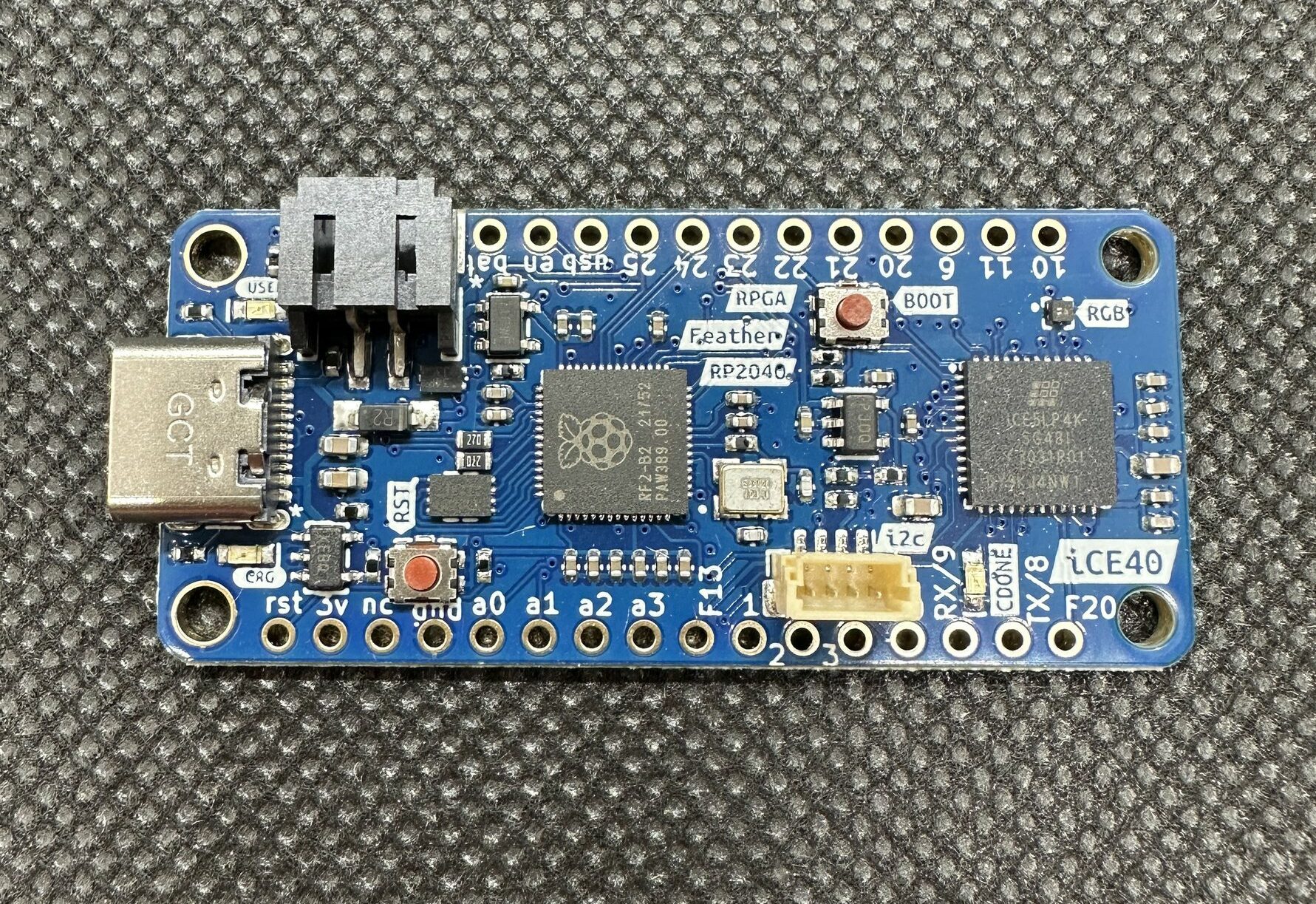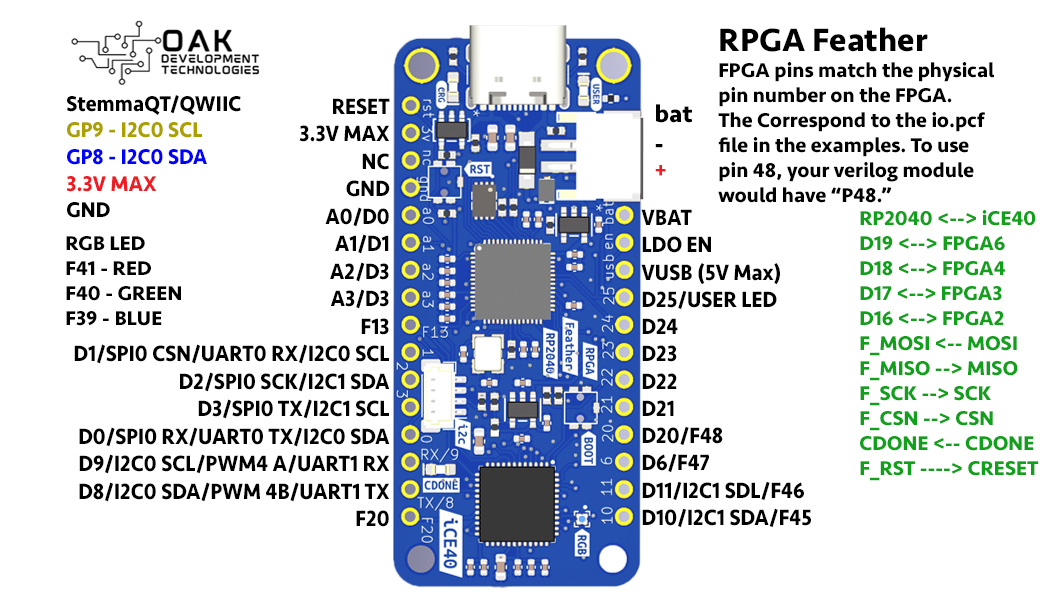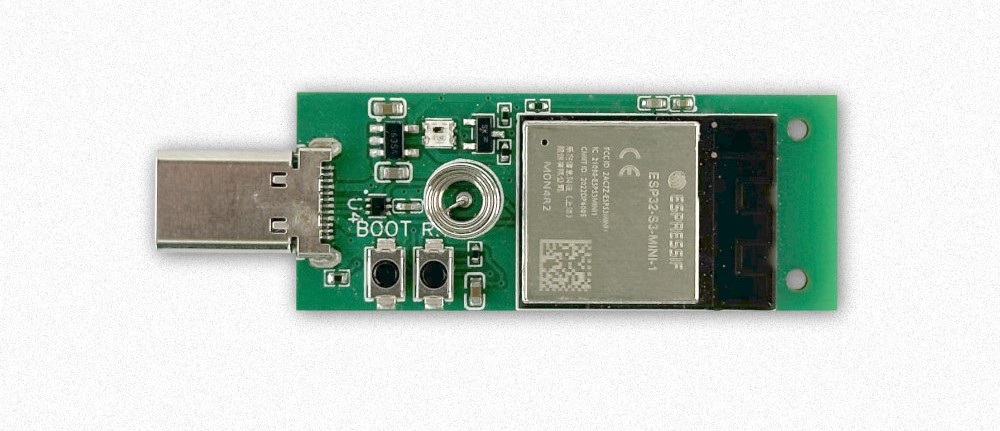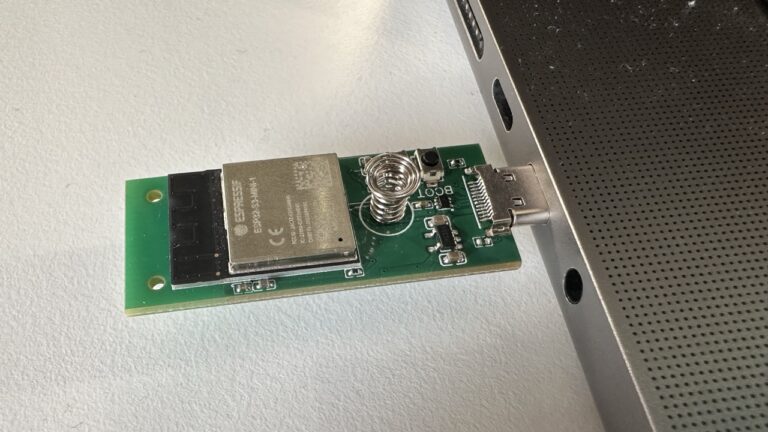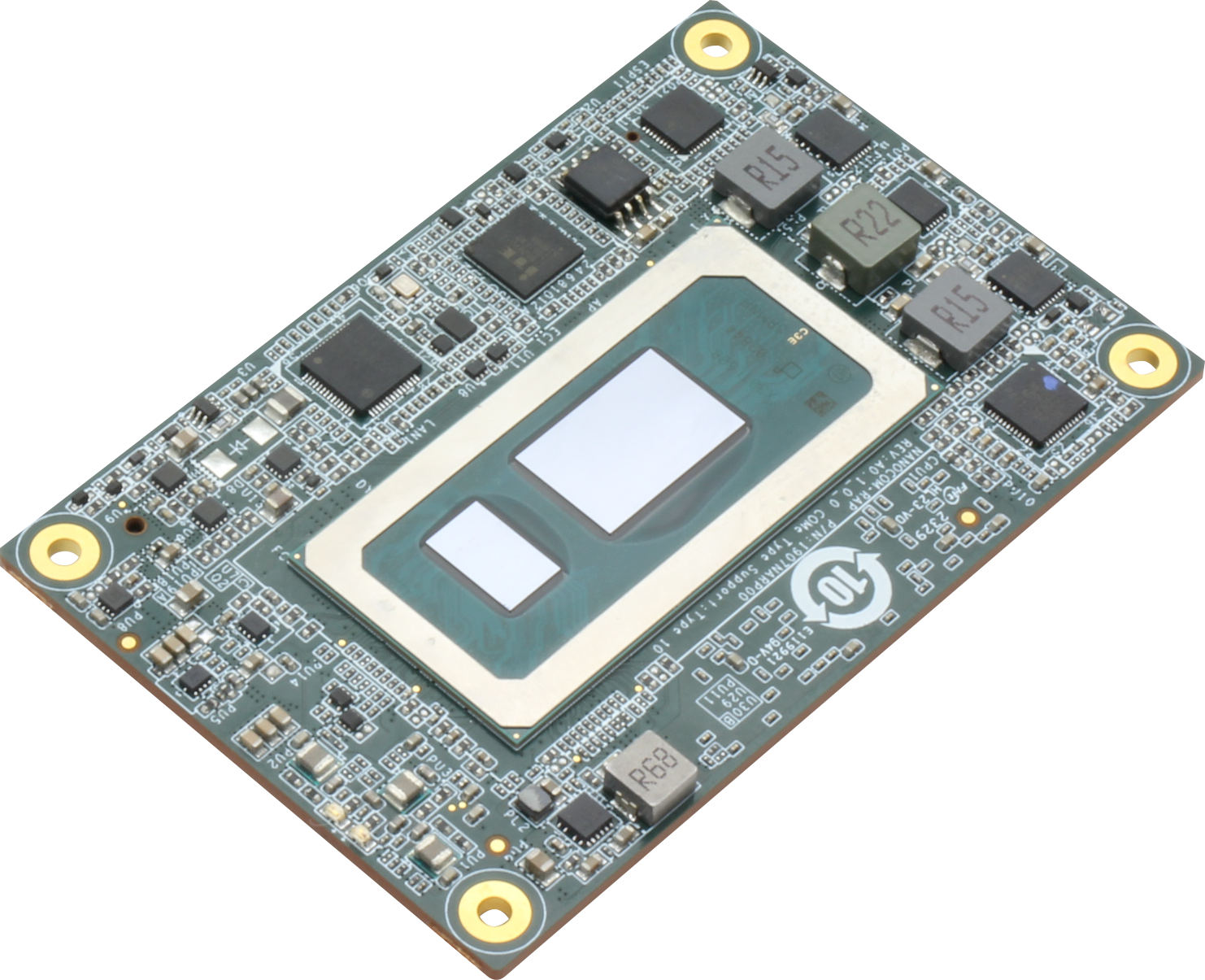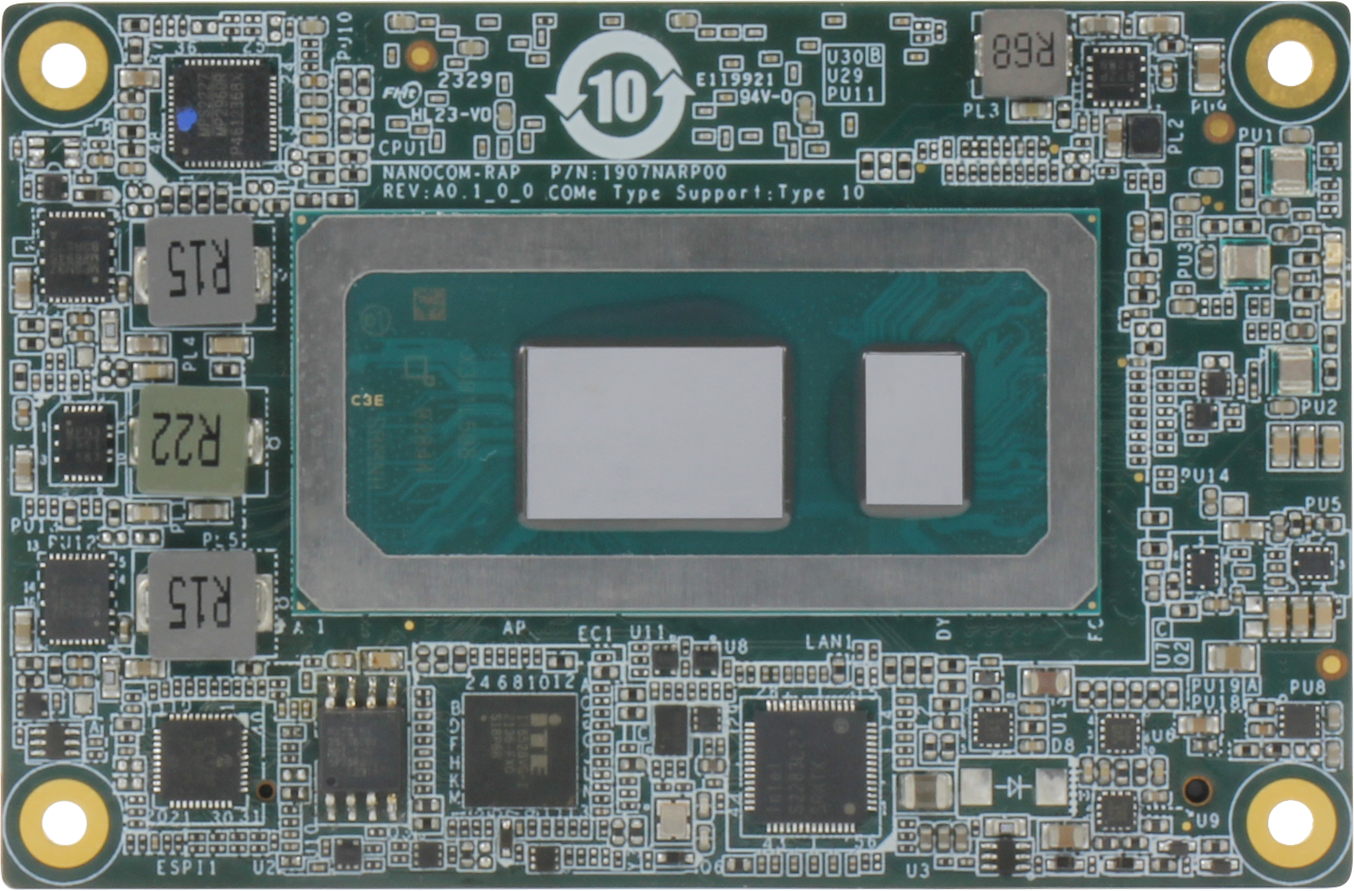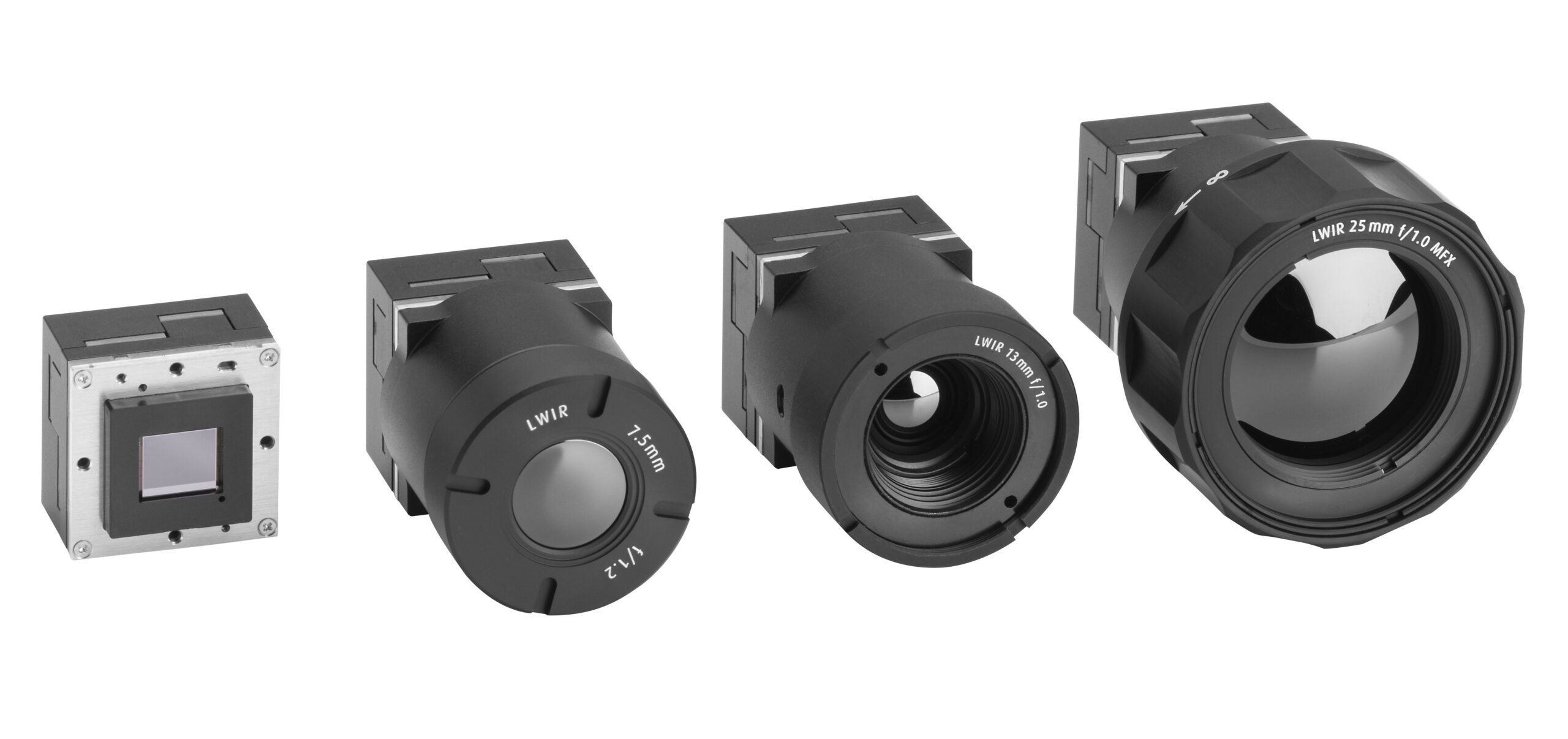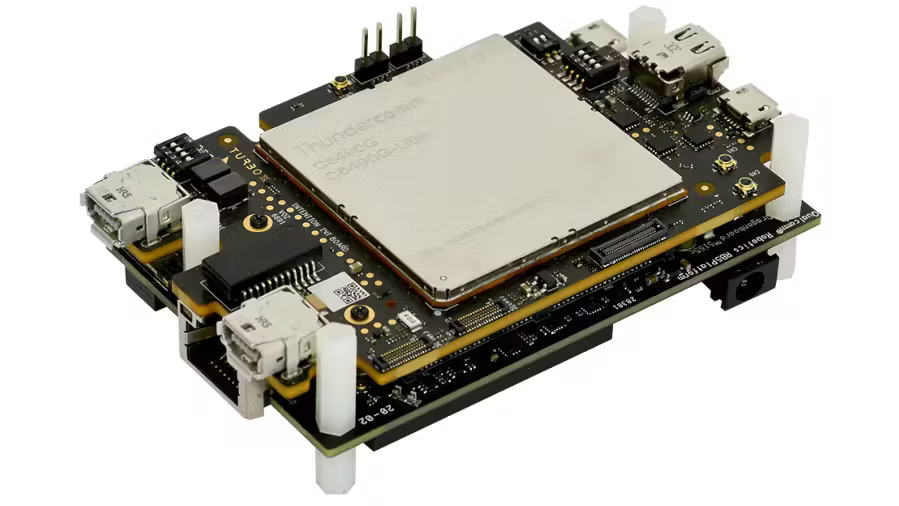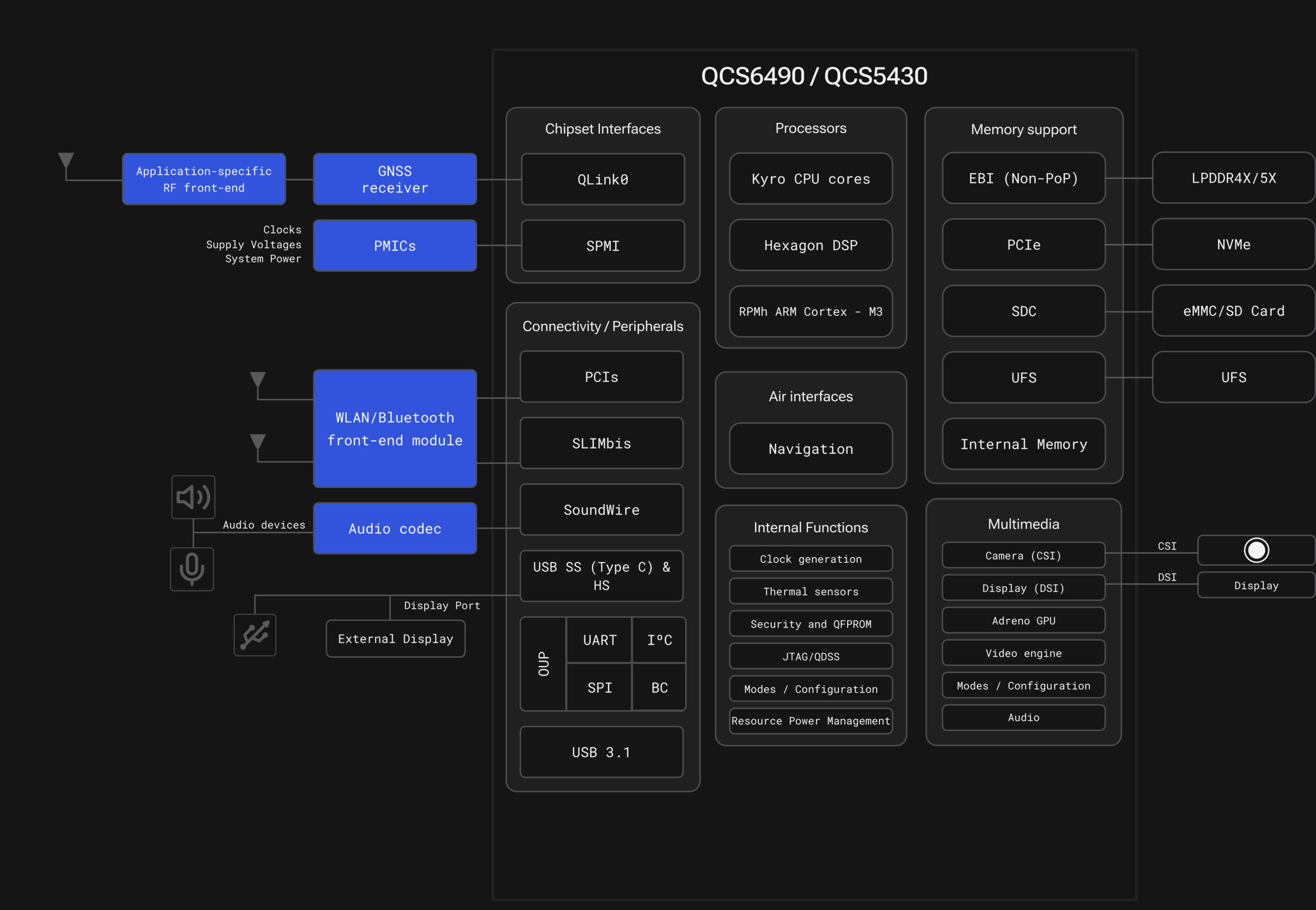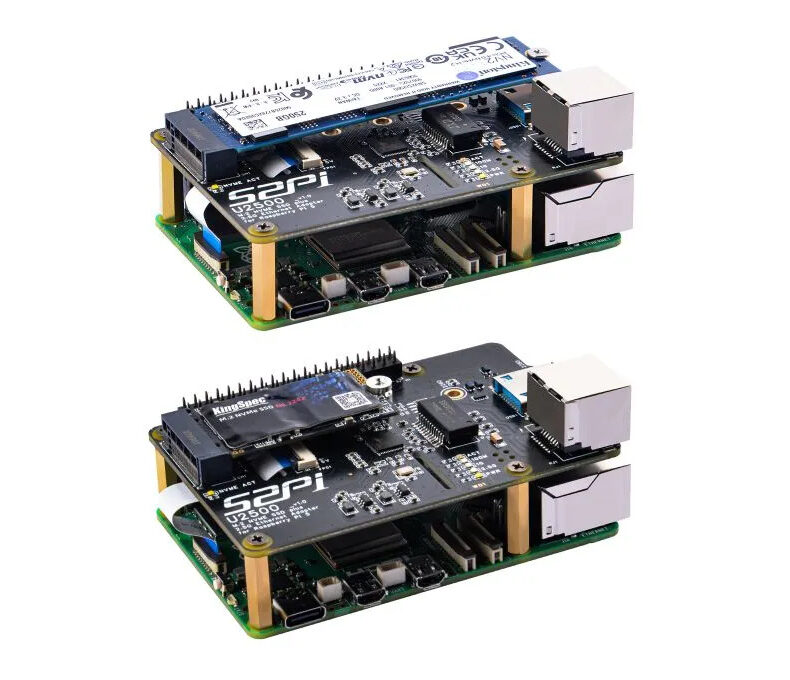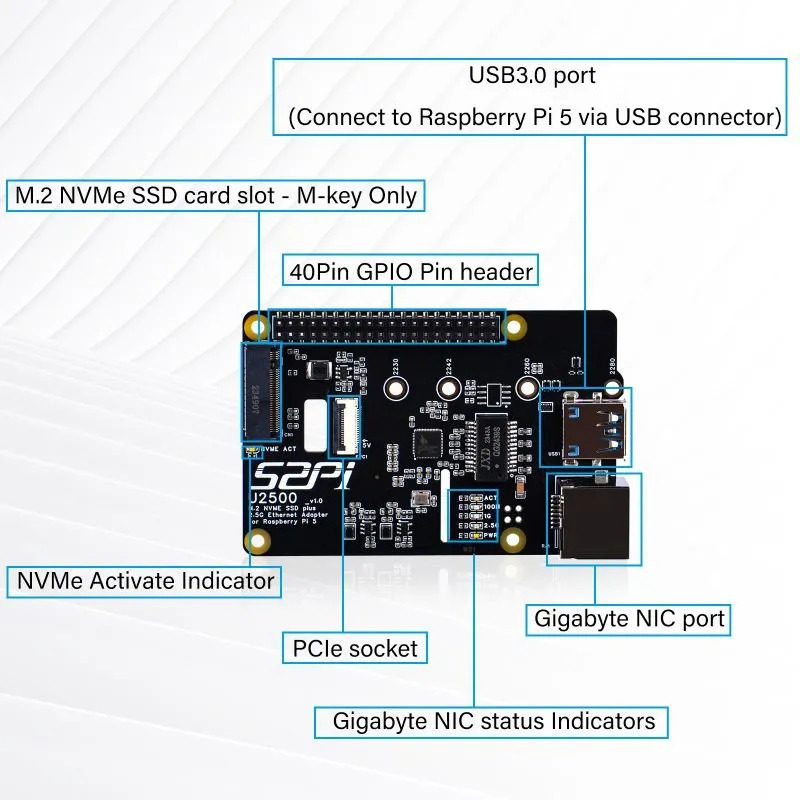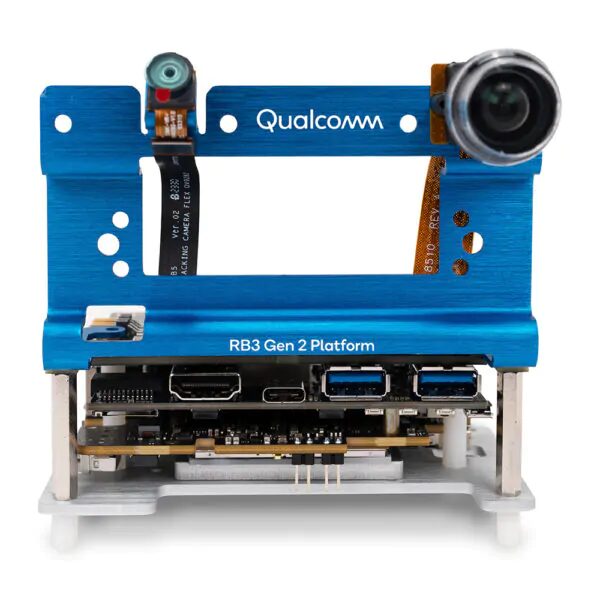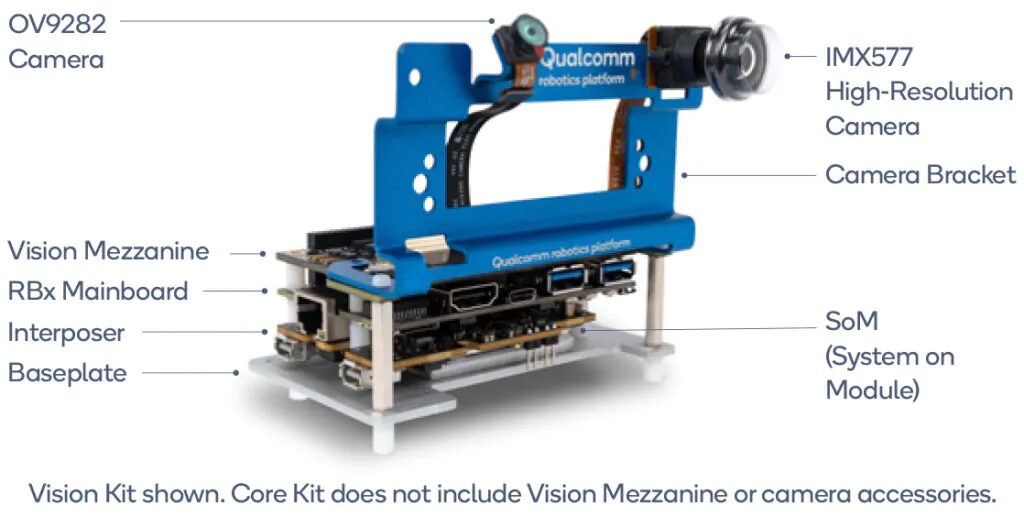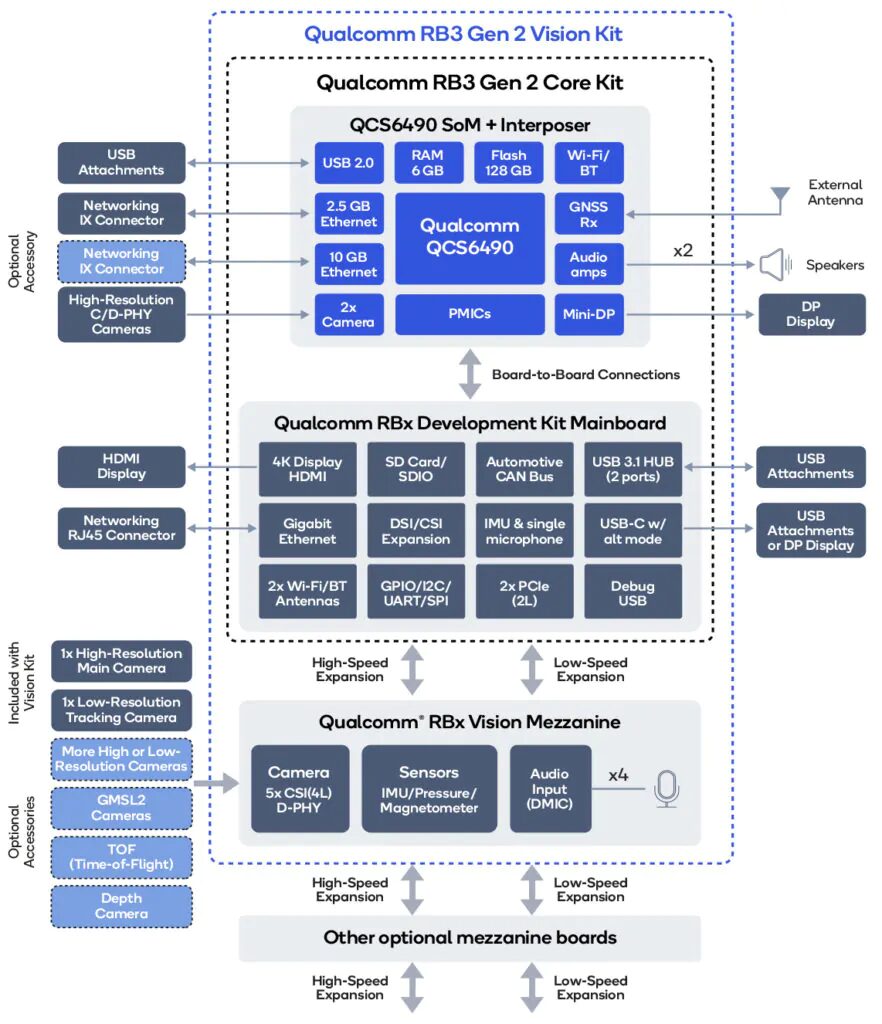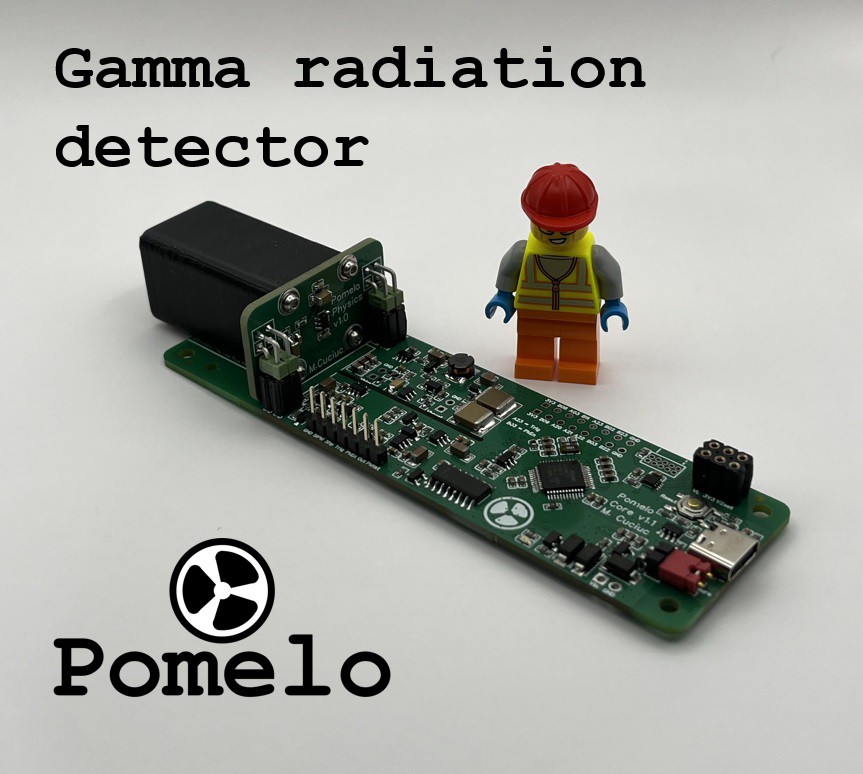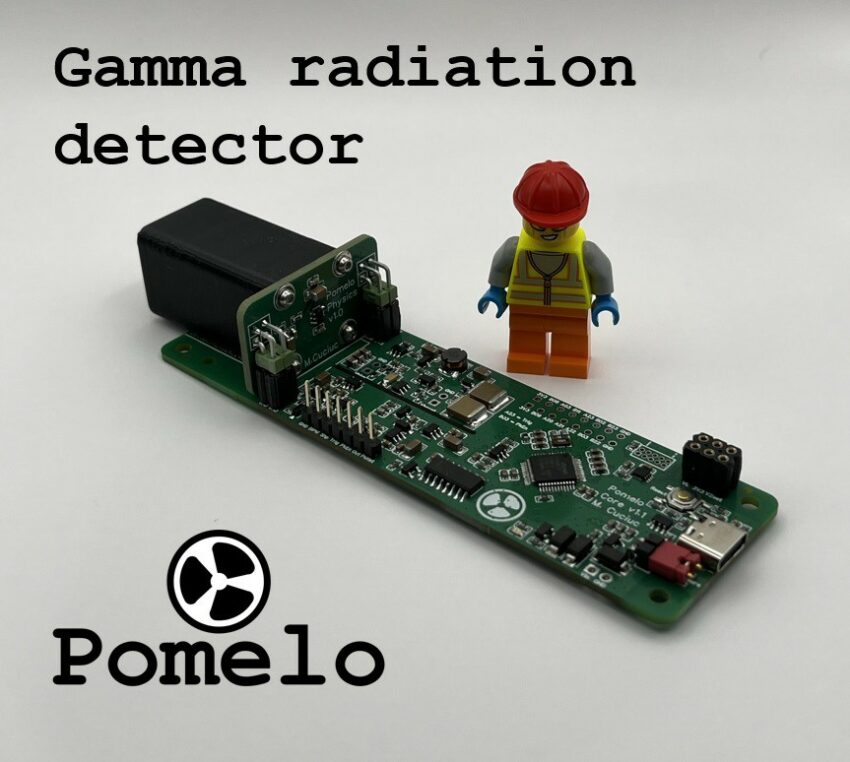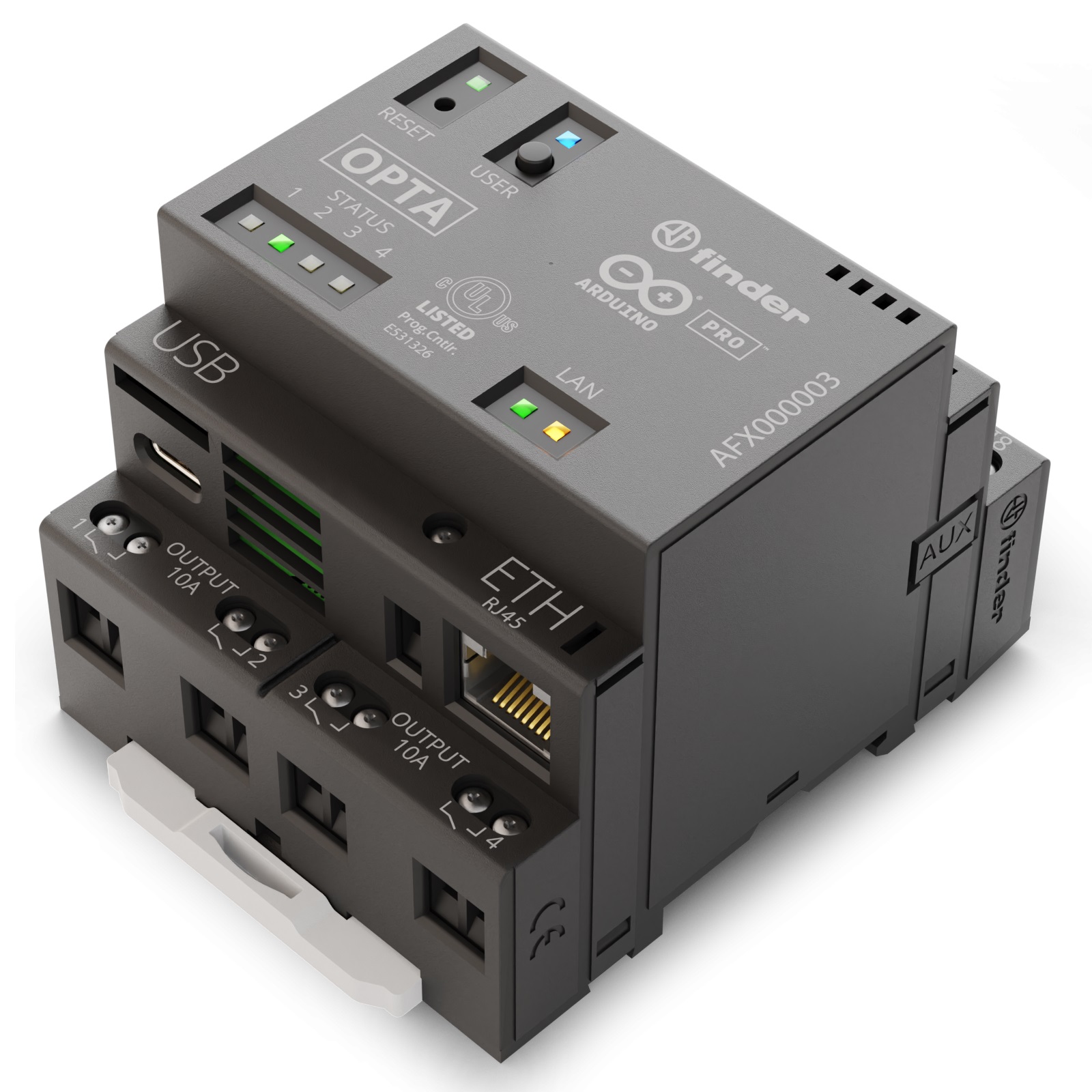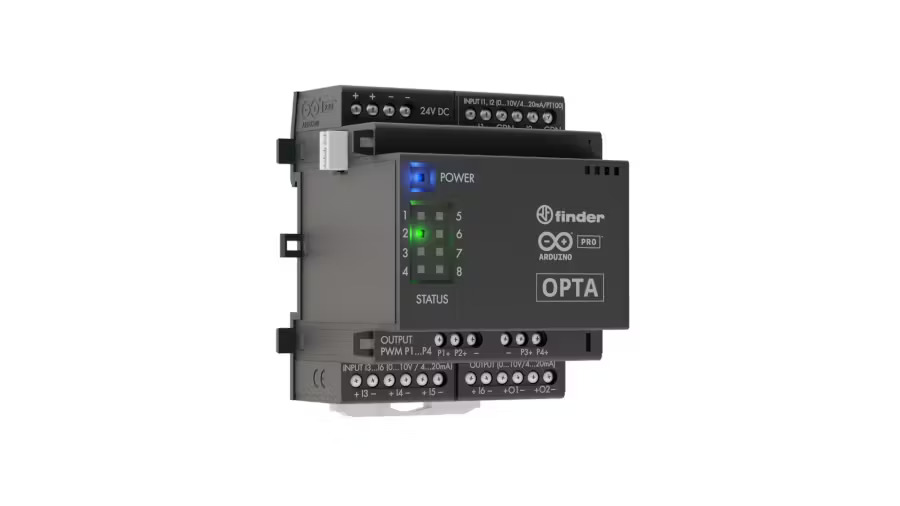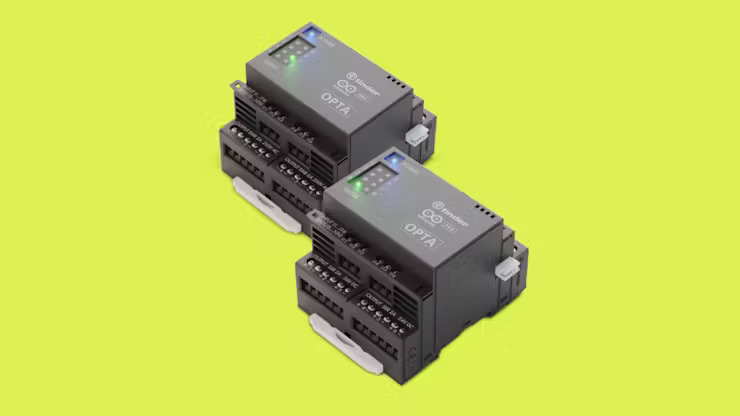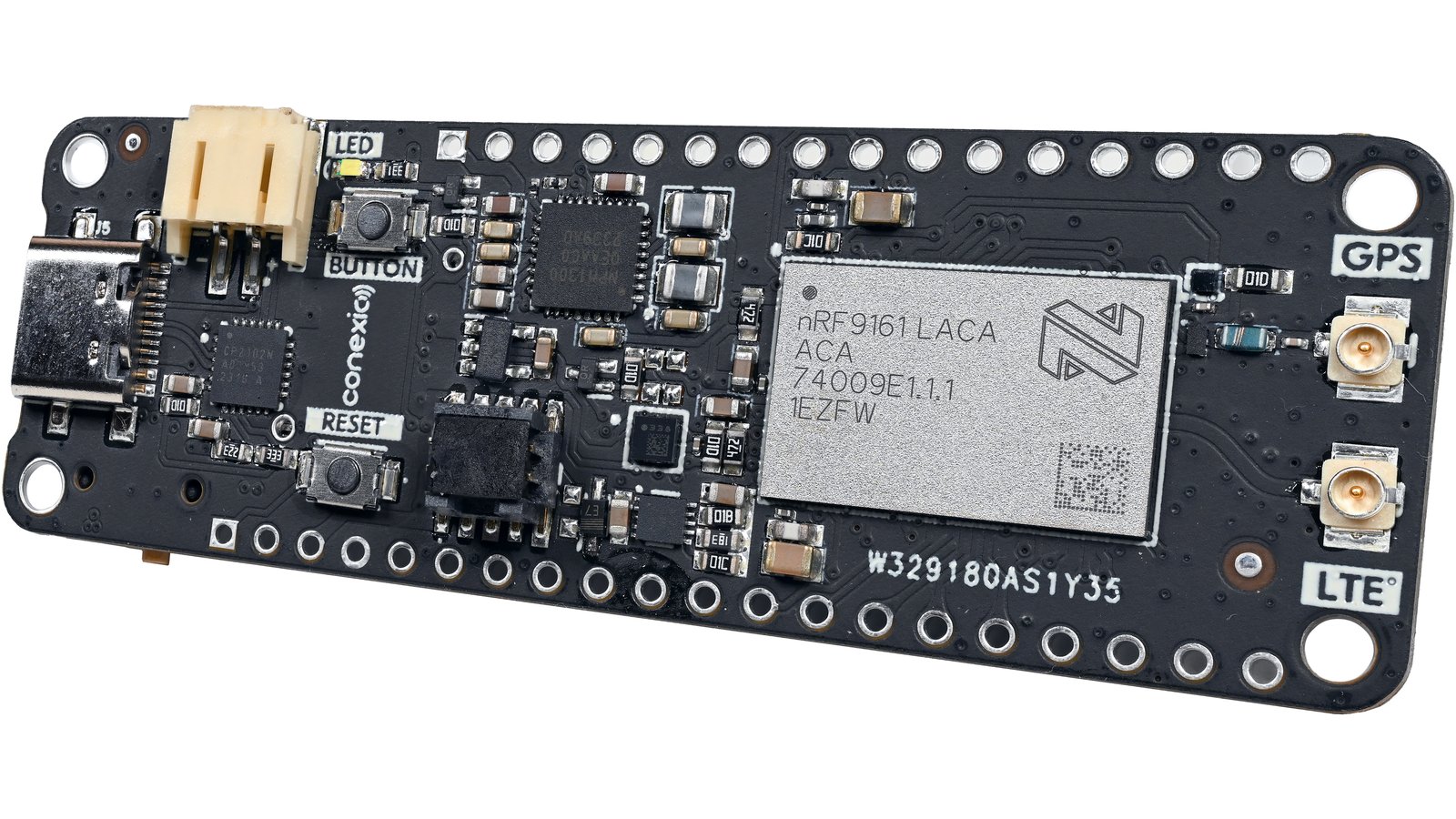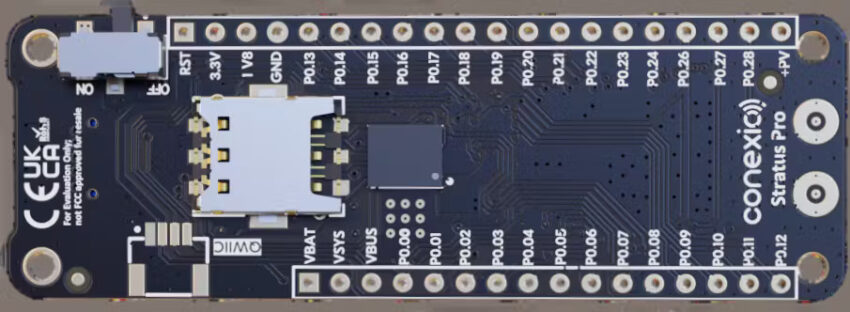RPGA Feather by Oak Development Technologies is an RP2040 and iCE40FPGA-powered development board in an Adafruit Feather form factor. The board is tiny and features an MCP73831 1S LiPo charger, a USB 2.0 Type-C connector for power and programming, and an RGB LED driven by the FPGA
Speaking of the FPGA it’s an ultra-low-power iCE40 Ultra product family designed for mobile applications such as smartphones, tablets, and handhelds, it features 3,520 logic cells 80 Kbits of embedded Block RAM, and much more. Previously we have seen Oak Development Technologies introduce the IcyBlue Feather 2 and IcyBlue Feather, both powered by the iCE40 FPGA module.
RPGA Feather Dev Board Specifications
- MCU: Raspberry Pi RP2040 dual-core Cortex-M0+ @ 133 MHz, 264KB SRAM
- FPGA: Lattice Semiconductor iCE5LP4K, 3,520 logic cells, 80 Kbits EBR, 640 bits distributed RAM, 2x I2C, 2x SPI
- Storage: 2MB QSPI flash
- USB: USB 2.0 Type-C Host/Device (power & programming)
- Expansion:
- 2.54mm headers w/ RP2040
- Up to 11x GPIOs to RP2040 (3 for bitstream programming)
- STEMMA QT/QWIIC connector
- 4x jumper blocks
- Clock Management: 1x PLL, 2x oscillators
- Misc:
- Up to 4x LEDs (RGB, charge, CDONE, user)
- 2x buttons (boot, reset)
- Power:
- 5V via USB-C
- MCP73831 LiPo charger
- Dimensions: 23mm x 51mm (same as Adafruit Feather)
The RPGA Feather simplifies FPGA programming by leveraging the Raspberry Pi RP2040 and CircuitPython. Three dedicated pins enable direct bitstream programming onto the iCE5LP4K FPGA. Developers can easily set up their environment with open-source tools like Yosys OSS CAD Suite and the CircuitPython Community Bundle, along with their preferred CircuitPython IDE. As an open-source hardware project, the RPGA Feather’s schematics, bill of materials, production files, and usage examples are readily available on GitHub.
The RPGA Feather, priced around $47, is available exclusively on Tindie, and offers a unique blend of RP2040 and FPGA capabilities, similar to the Pico-Ice board but with potential volume discounts.


